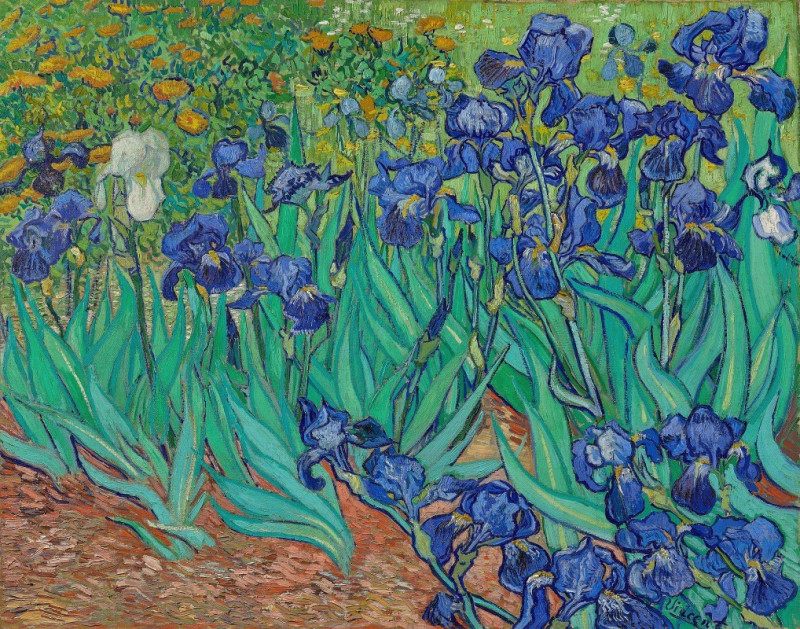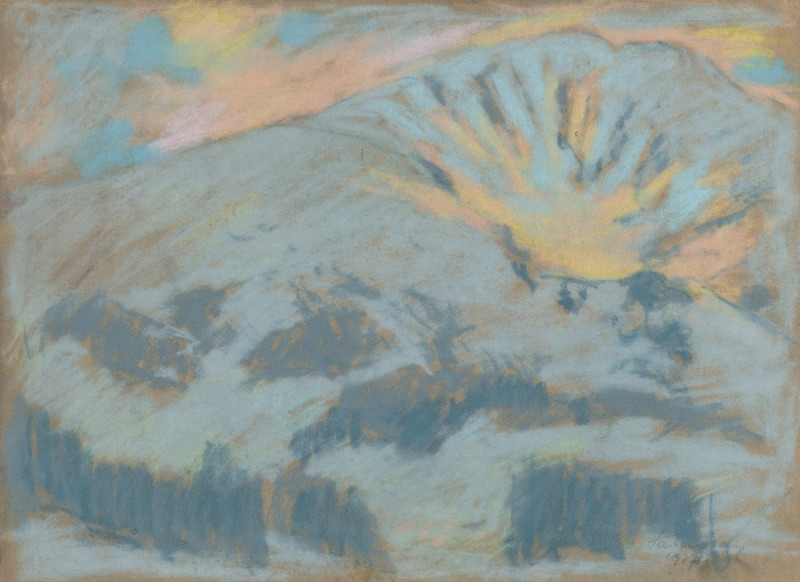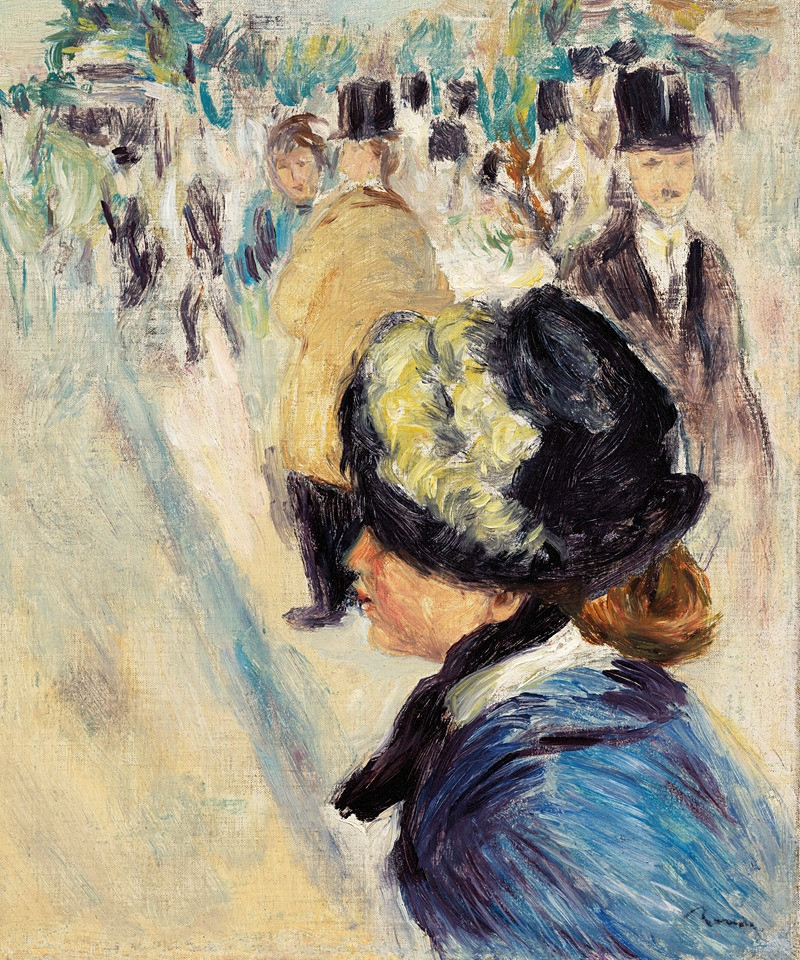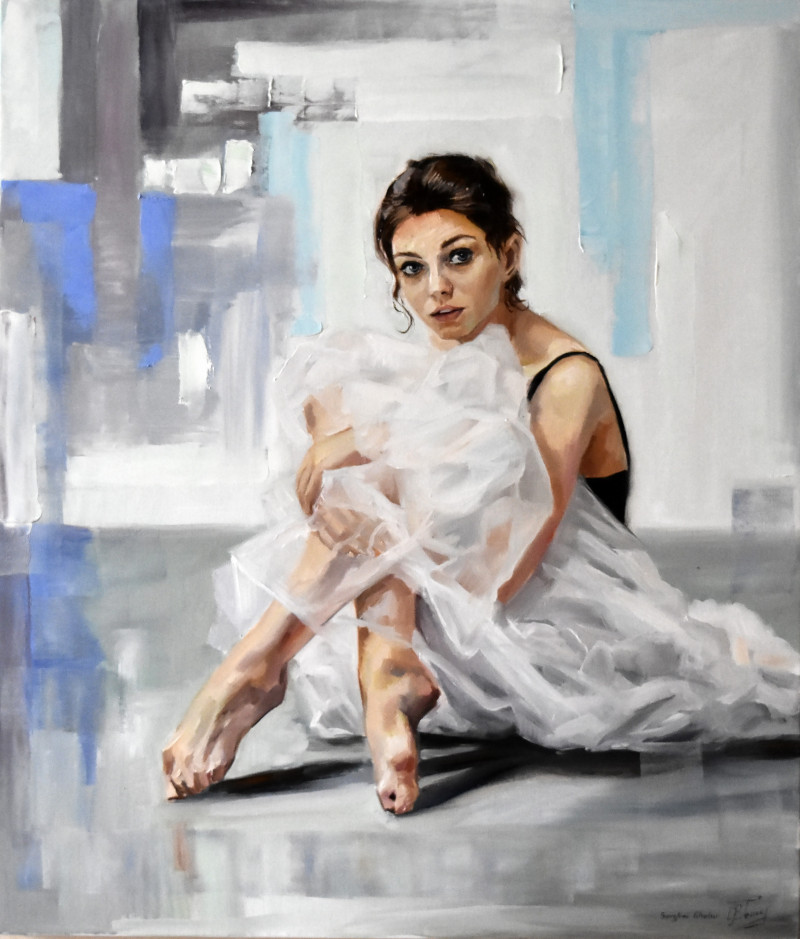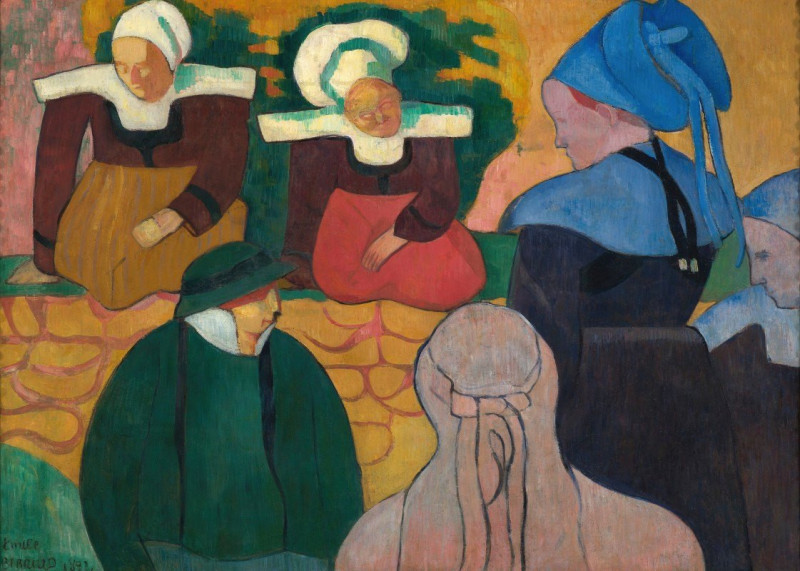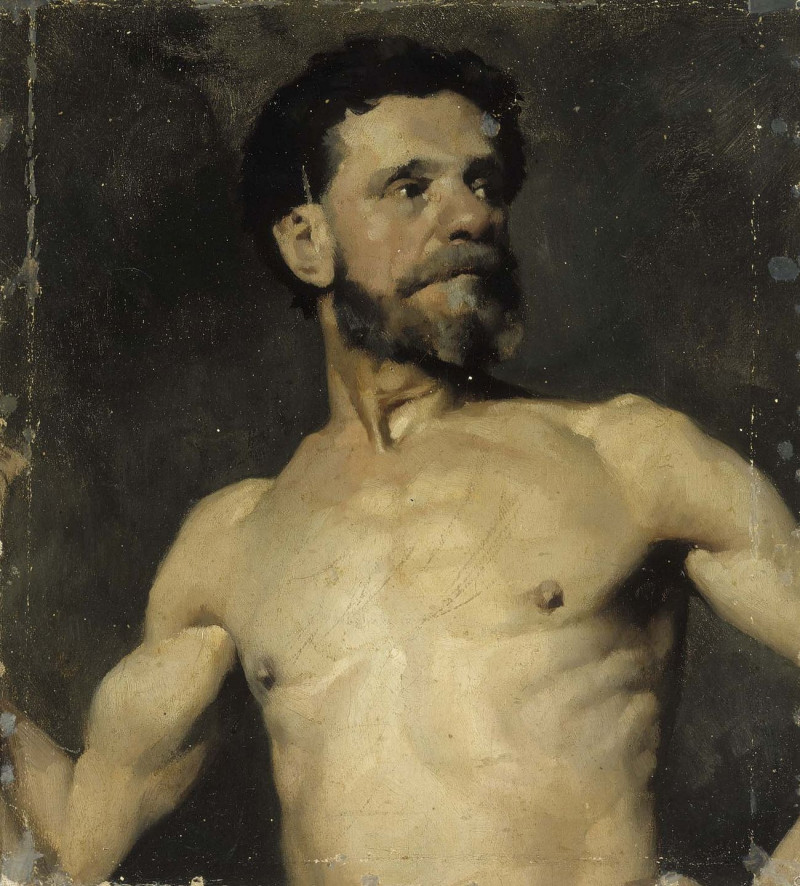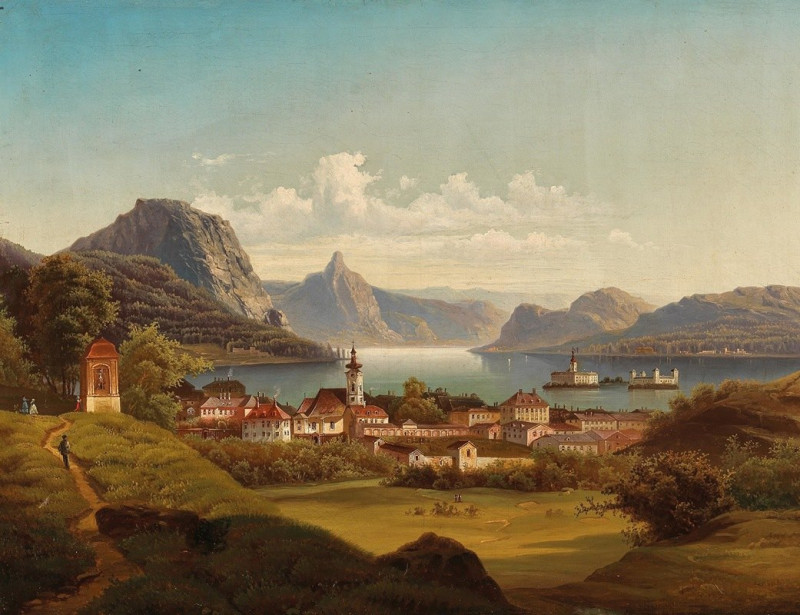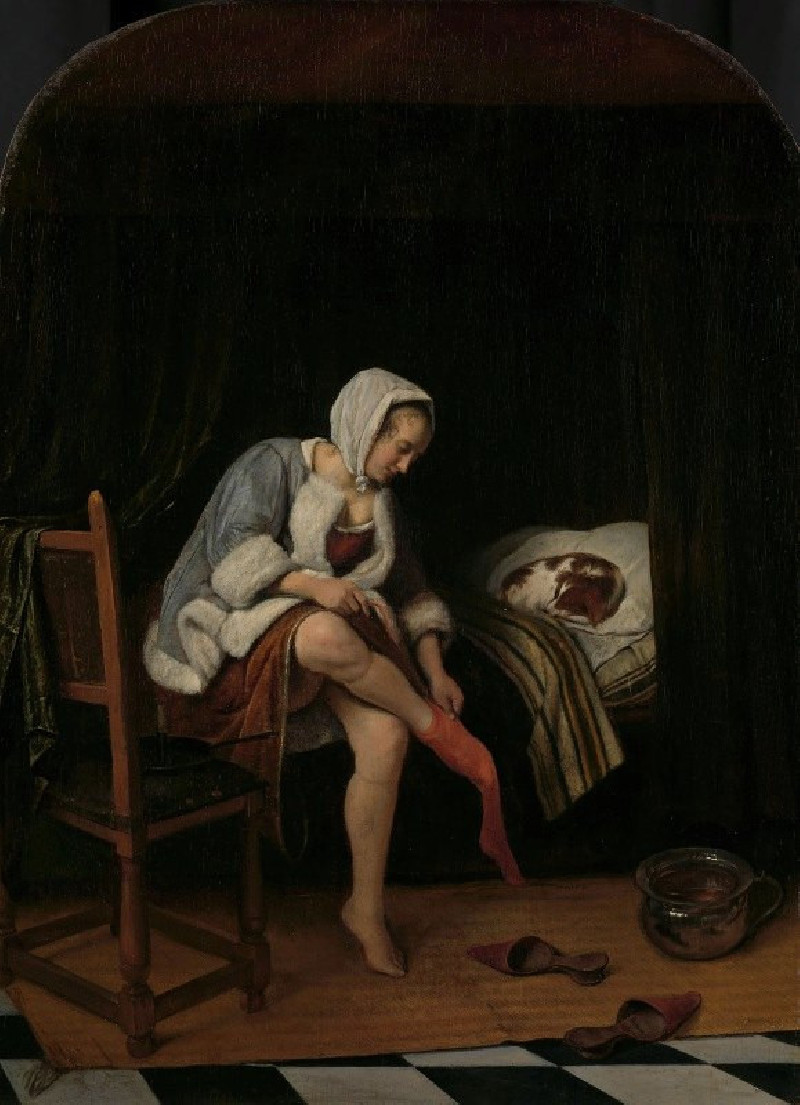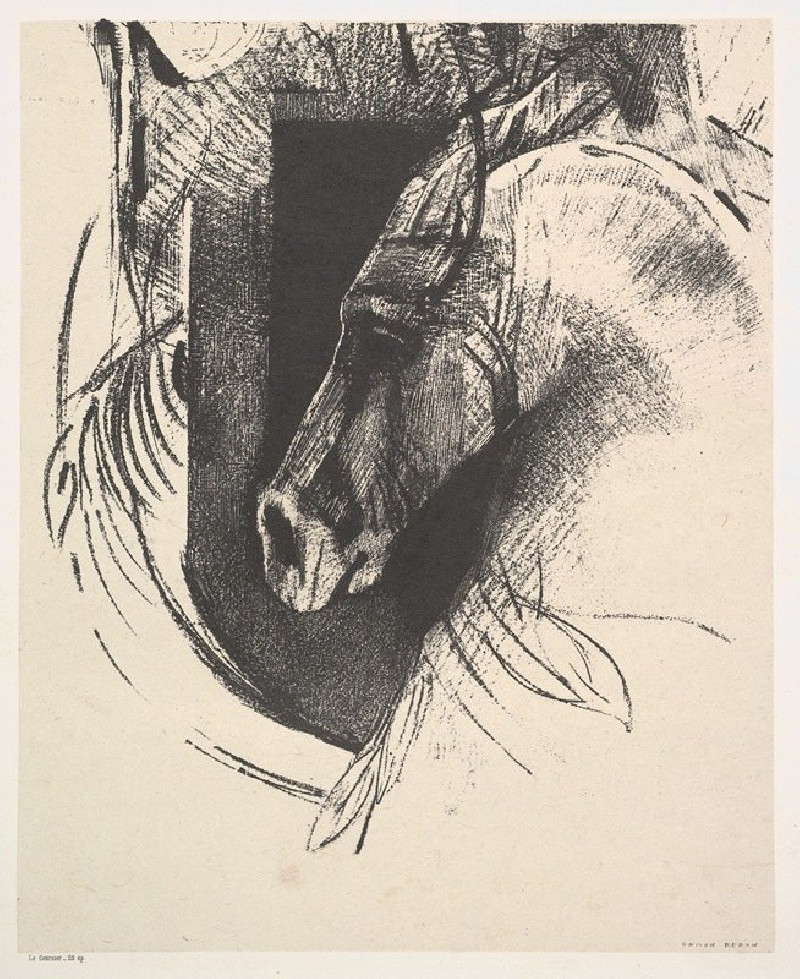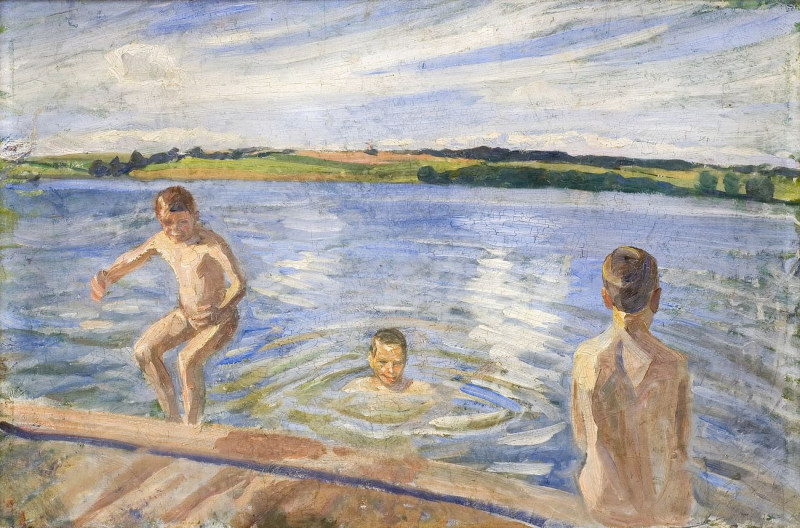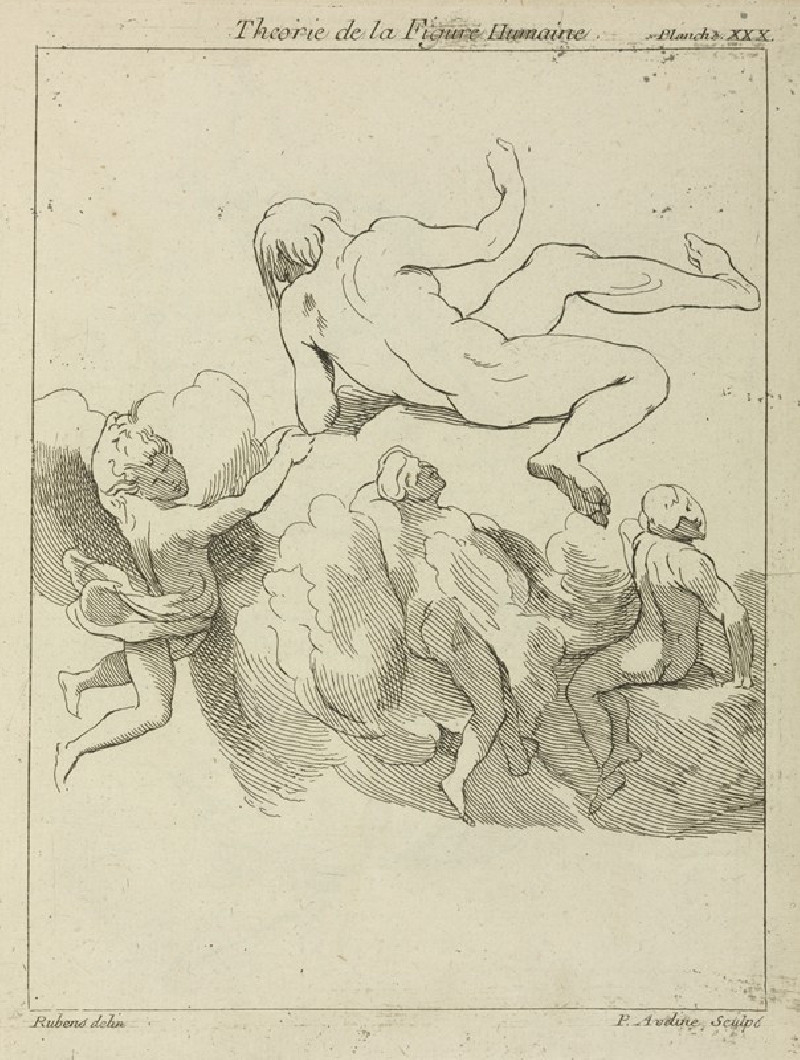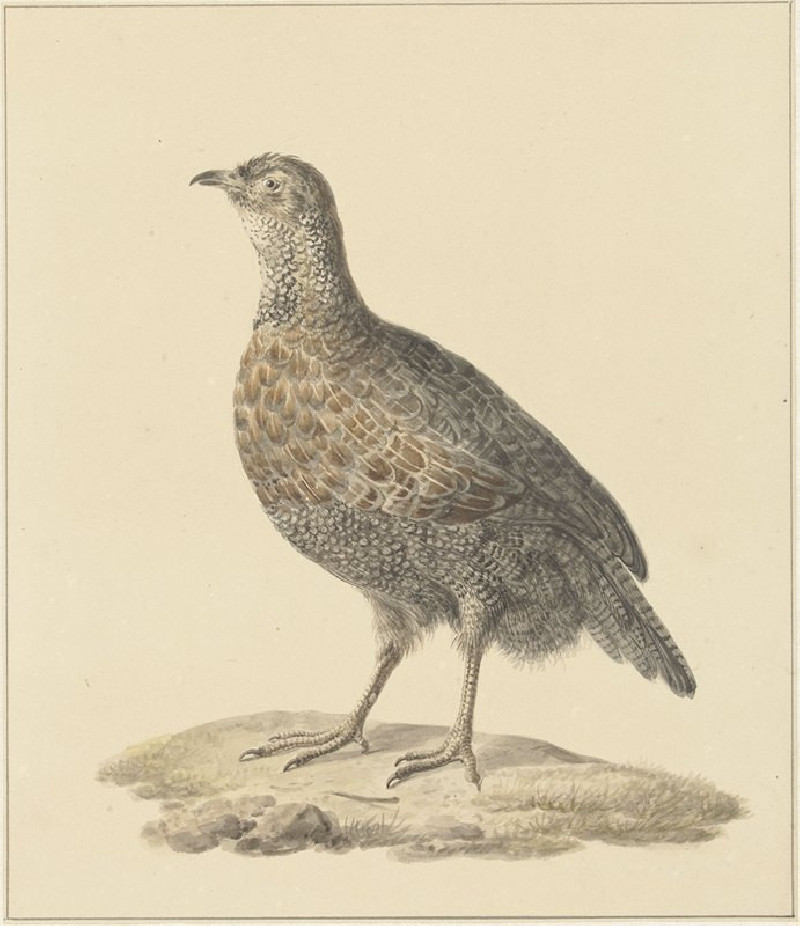Stilleben II (around 1923)
Technique: Giclée quality print
Recommended by our customers
More about this artwork
"Stilleben II" by Karl Wiener is a compelling exhibit of the artist's exploration of color and form, dating back to around 1923. The painting features a simple yet expressive still life composition that highlights Wiener’s distinctly vivid color palette and abstract shaping. At the forefront of the canvas, an elegantly elongated blue bottle and an earth-toned pot with a slender, sprouting plant occupy the subtle geometric space defined by bold blocks of yellow, pink, and red.These elements of the composition are framed within sharp, clean lines that both guide the viewer’s gaze and underscore the intentional simplicity of the subject matter. Wiener’s style suggests an embrace of the modernist movements of his time, focusing on the potential beauty in everyday objects.The combination of saturated, almost luminous colors alongside the simplicity of the objects creates a striking duality of complexity and minimalism. "Stilleben II" encourages viewers to pause and appreciate the ordinary, transformed through artistry into something intriguing and unexpectedly profound.
































